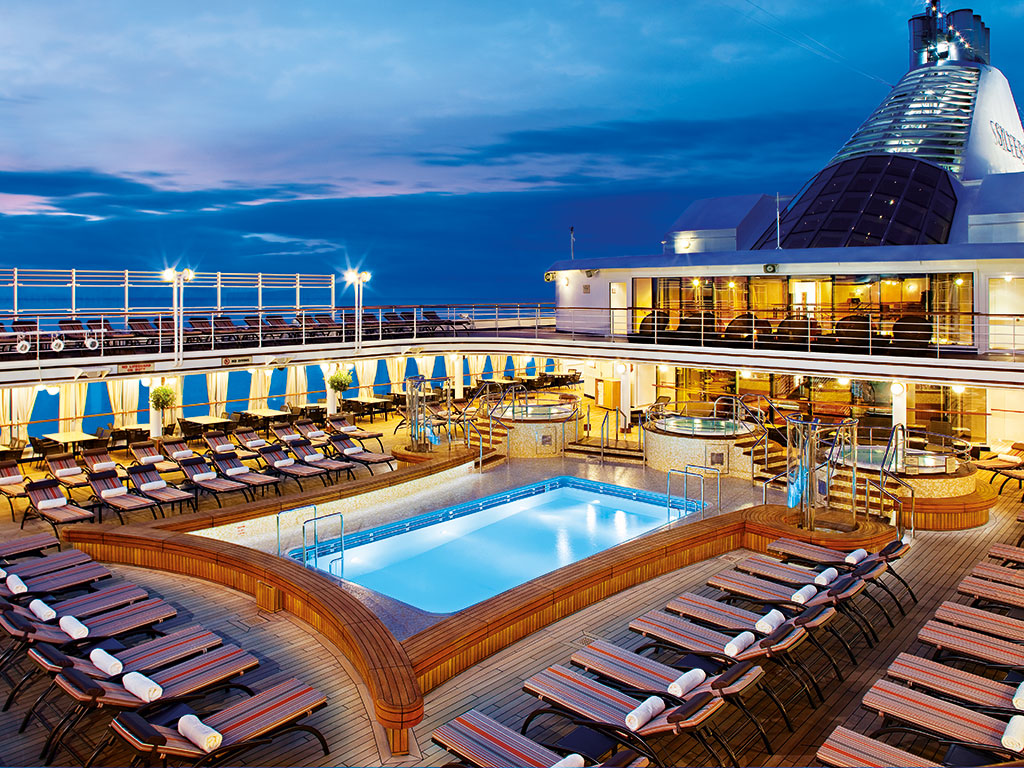Meeting planners often disregard the cruise industry entirely when considering a venue for their next event. Underrated and underutilised, cruising has the potential to further bolster the European MICE sector, but many event organisers retain out-dated opinions on exactly what it involves. “Cruises are, in essence, horizontal, floating hotels. Whatever you can do in a hotel, you can do on a ship – and often better and cheaper”, according to Maarten Tromp, Corporate and Incentive Sales at Silversea Cruises, which has been voted Best MICE Cruise Company, Europe in the Business Destinations Travel Awards 2015.
Tromp has been working to integrate the European cruise and MICE industries for a number of years. His view is that cruises can be a prime choice for corporate events, and that too many people involved in the meetings sector are very much behind the times when it comes to realising the full extent of what cruises can offer them and their corporate clients.
Many people are behind the times when it comes to realising the full extent of what cruises can
offer them
A change in thinking
This is an issue that is unique to Europe, however. Tromp told Business Destinations, “In the US, cruising is an extremely attractive activity, and is often used for groups of executives. Companies reward their dynamic sales teams with exciting and enjoyable cruises, which at the same time provide an innovative venue for sales briefings, strategy planning and team building.” Some itineraries are even planned around the potential for meetings, with two of three consecutive days at sea allowing for some intensive brainstorming meetings and award ceremonies, followed by a relaxing day at port.
“The ship can sail between ports at night so that delegates wake up to an exciting new destination every morning. Days can be allocated to sightseeing, onshore excursions or teambuilding exercises on the beach – one day, delegates will work hard in a conference setting, and the next they are enjoying a golf tournament on a remote island”, said Tromp.
A single cruise can meet many different objectives, providing a constant change of scenery without the need to find new accommodation.
According to Tromp, the European reluctance to embrace the cruise industry in the same way that the US has is partially down to the British Government’s attitude towards the sector: “In the US, benefits in kind are not taxed, success is encouraged and rewarded, and cruising is an integral part of that reward process. In the UK, pure incentives and training on cruise ships are still regarded by HM Revenue as a holiday, and so are taxed as such. A change in the treatment of incentives and work getaways of this nature would give a crucial boost to corporate cruising.”
Unique expeditions
Silversea’s cruises have been expertly tailored to suit corporate itineraries in particular: “On Silversea, every guest has a suite, not just a cabin. Our cruises are all-inclusive, even allowing for champagne, and organisers will know in advance exactly how much everything will cost – from accommodation and fine dining to meeting rooms, excursions and port charges – in order to guarantee that their guests will have a fabulous time,” Tromp said.
The company’s ships are among some of the smallest and most intimate cruise liners in the world, making it possible for companies to charter entire vessels. Silversea’s classic fleet currently comprises six ships, the largest of which – the Silver Spirit – can accommodate 540 passengers.
Silversea also has a unique ‘expedition fleet’: its smallest vessel, the Silver Galapagos, accommodates 100 passengers and sails year-round exclusively in the Galapagos region. The Silver Explorer joined the fleet in 2008, becoming the first cruise ship in the world to combine expedition cruising (the ship has a specially strengthened hull that allows it to explore the Arctic and the Antarctic) with luxury accommodation.





